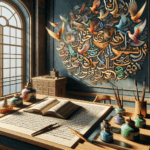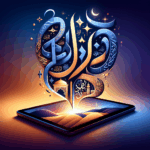The Arabic Alphabet and Its Role in Multicultural Understanding
In a world that’s becoming more interconnected every day, understanding diverse cultures has never been more important. One fascinating way to delve into a culture is through its language. Today, let’s explore the Arabic alphabet and its significant role in fostering multicultural understanding. 🌍
Table of Contents
1. Introduction to the Arabic Alphabet
2. The Historical Significance of Arabic
3. Arabic in Modern Multicultural Contexts
4. Learning Arabic: A Gateway to Cultural Appreciation
5. Conclusion
6. FAQs
Introduction to the Arabic Alphabet
The Arabic alphabet is a script that’s beautifully cursive and has been used for centuries. Comprising 28 letters, it is written from right to left, unlike English. What’s intriguing is that these letters change shape depending on their position in a word! This fluidity allows for a script that is both artistic and functional.
The Historical Significance of Arabic
Arabic has a rich history that dates back to the 4th century. It is not only the liturgical language of Islam but also a language of science, literature, and philosophy during the medieval period. The Arabic script has influenced many other languages, including Persian, Urdu, and even some European languages during the Middle Ages. This historical significance makes Arabic a key player in cultural exchanges throughout history.

Arabic in Modern Multicultural Contexts
Today, Arabic is spoken by over 400 million people worldwide, making it one of the most spoken languages globally. In multicultural societies, the Arabic language serves as a bridge, connecting people from different backgrounds. It is a language of trade, diplomacy, and cultural heritage.

Many countries include Arabic as part of their educational curriculum, acknowledging its importance in global communication. In cities like London, New York, and Paris, Arabic is a common second language, reflecting the cities‘ vibrant multicultural makeup. 🌐
Learning Arabic: A Gateway to Cultural Appreciation
Learning the Arabic language opens doors to understanding a rich tapestry of cultures and histories. It’s not just about learning to speak; it’s about appreciating the art, literature, and philosophy that comes with it.
Here are a few actionable steps to start learning Arabic:
📘 Enroll in an online or local language course.
🎧 Listen to Arabic music and podcasts to get familiar with the sounds.
📚 Read Arabic literature with translations to enhance comprehension.
🗣️ Practice speaking with native speakers to build confidence.
Conclusion
The Arabic alphabet is more than just a set of symbols; it is a key to unlocking a deeper understanding of diverse cultures. By learning Arabic, we not only gain language skills but also build bridges between communities, fostering a more inclusive world. Whether for personal growth or professional advancement, embracing the Arabic language can lead to enriching experiences and greater multicultural understanding.
FAQs
Q: How difficult is it to learn the Arabic alphabet?
A: While it may seem challenging at first due to its unique script and right-to-left writing style, with practice and dedication, learning the Arabic alphabet can be quite rewarding.
Q: Why is Arabic considered a significant language in multicultural societies?
A: Arabic is spoken by millions worldwide and serves as a bridge in multicultural communities, facilitating trade, diplomacy, and cultural exchanges.
Q: What are some resources to start learning Arabic?
A: There are numerous resources available, including online courses, language apps, podcasts, and community language groups that can help beginners get started.





